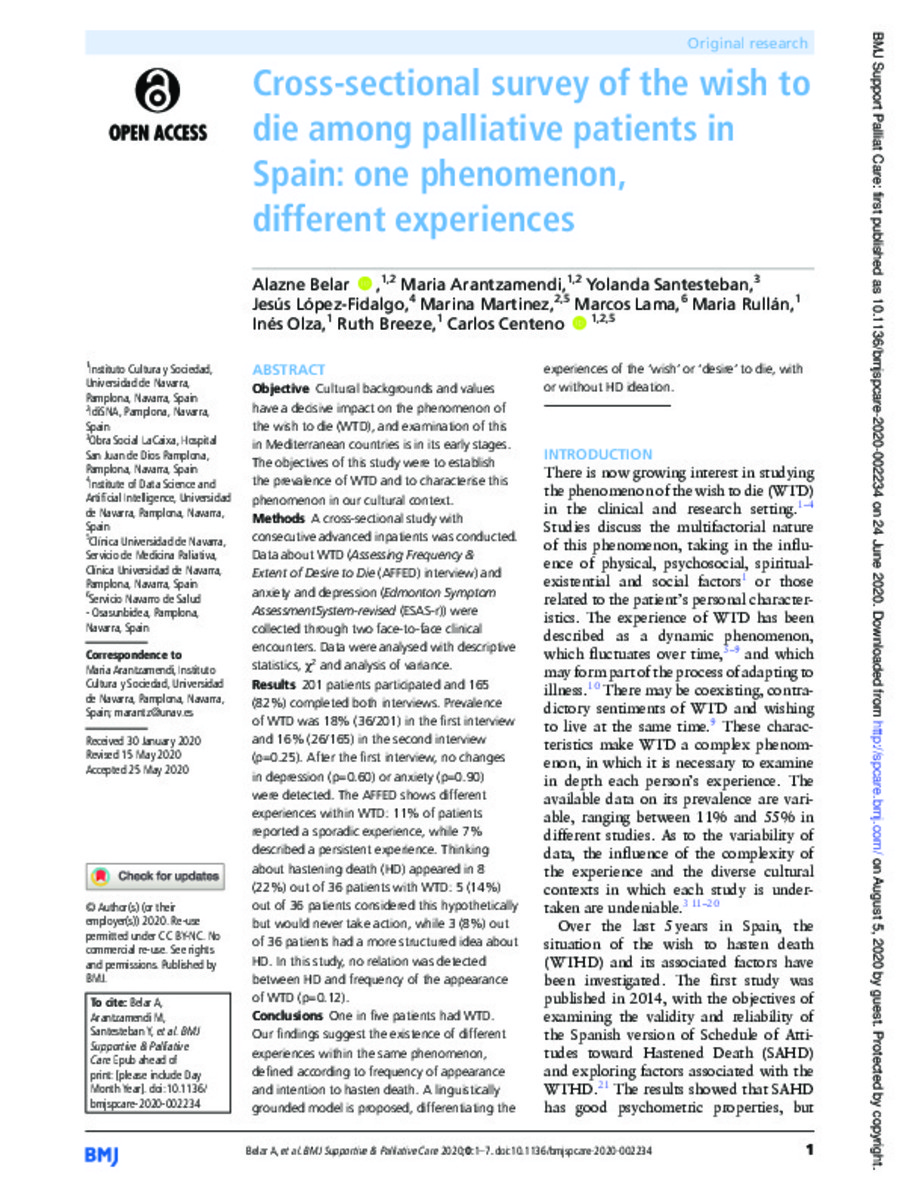Cross-sectional survey of the wish to die among palliative patients in Spain: one phenomenon, different experiences
Keywords:
Wish to die
Hastening death
Publisher:
Cambridge University Press
Editorial note:
This is an open access article distributed in accordance with the Creative Commons Attribution Non Commercial (CC BY-NC 4.0) license, which permits others to distribute, remix, adapt, build upon this work non-commercially, and license their derivative works on different terms, provided the original work is properly cited, appropriate credit is given, any changes made indicated, and the use is non-commercial. See: http://creativecommons.org/licenses/by-nc/4.0/.
Citation:
Belar A, Arantzamendi M, Santesteban Y, et al Cross-sectional survey of the wish to die among palliative patients in Spain: one phenomenon, different experiences BMJ Supportive & Palliative Care Published Online First: 24 June 2020.
Statistics and impact
0 citas en

0 citas en

Items in Dadun are protected by copyright, with all rights reserved, unless otherwise indicated.











